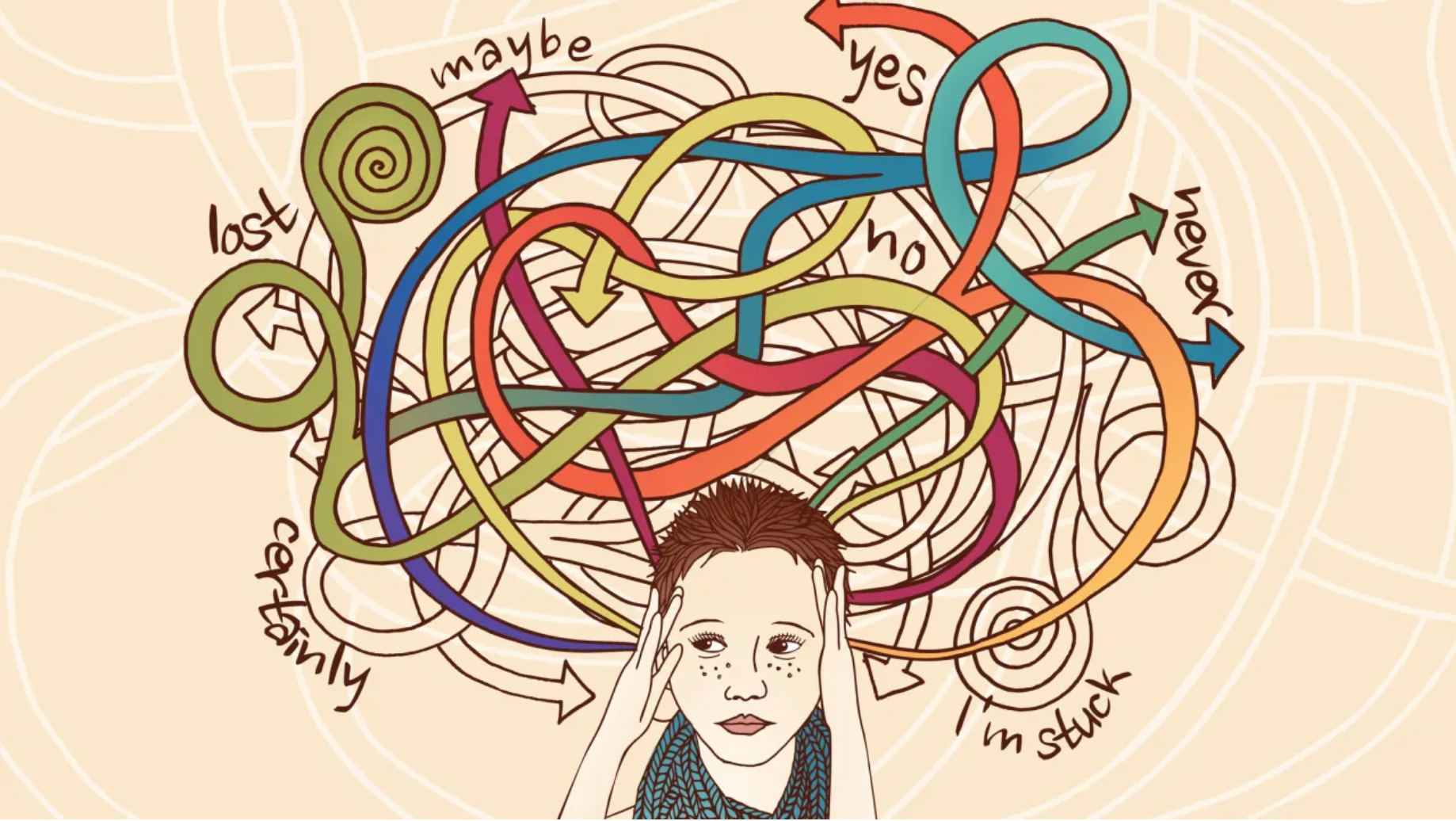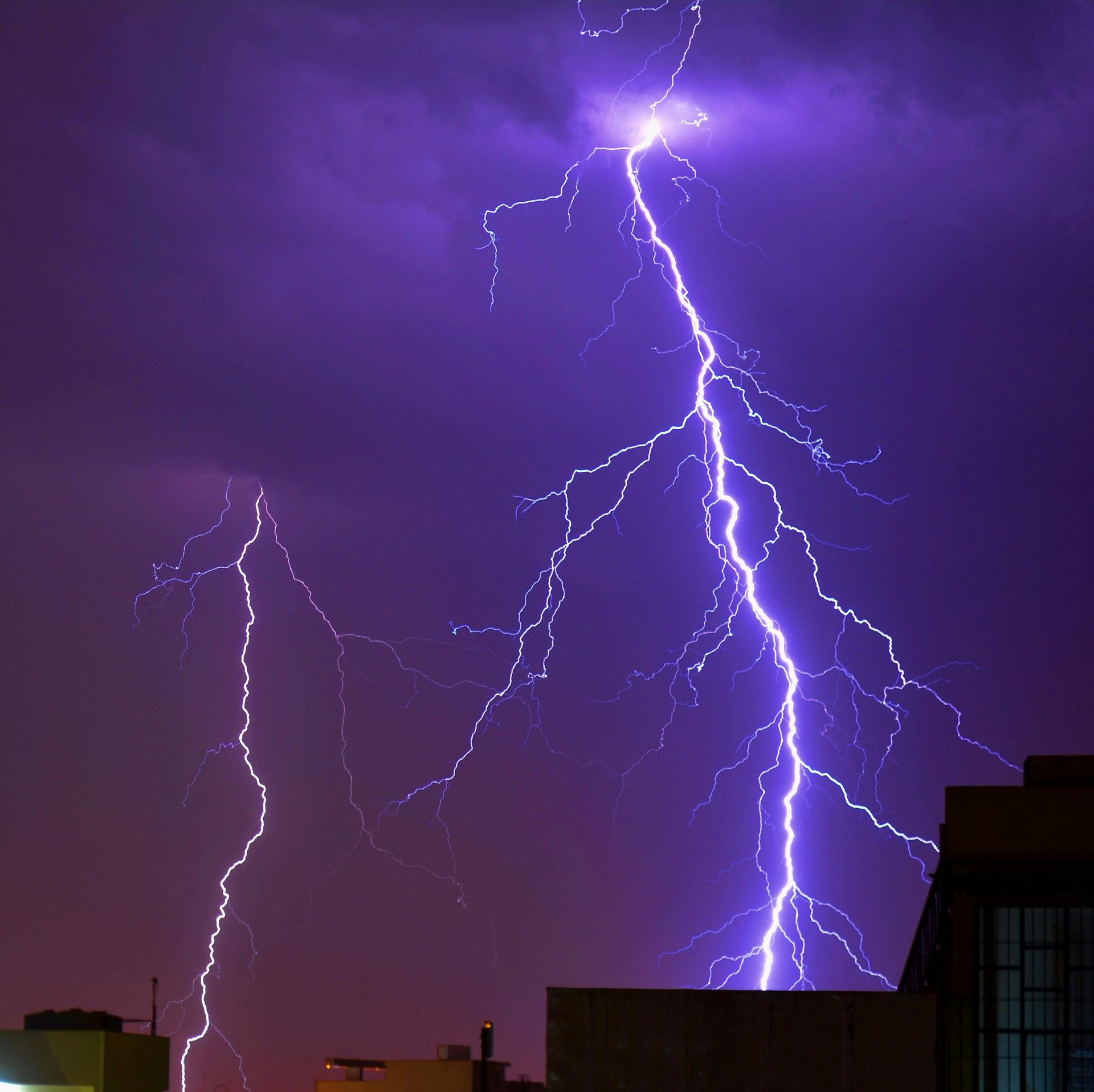The Rain and the Umbrella
How to Manage Emotional Storms with ADHD
How can ADHD benefit you?

Attention Deficit Disorder (ADD) and Attention Deficit Hyperactivity Disorder (ADHD), what is it and what can we do about it? According to the Mayo Clinic, ADHD is a chronic condition affecting millions of children and is characterized by a combination of symptoms such as difficulty sustaining attention, hyperactivity, impulsiveness, low self-esteem, poor performance in school, and relationship challenges. Although there is no cure for ADHD, it can be managed. ADD is similar, but without the hyperactivity component. Boys are more likely to be diagnosed with ADHD or ADD than girls.
I believe that ADHD is an overused and over-diagnosed term. For example a 8-year-old boy who was diagnosed with ADHD but actually had a learning challenge that wasn't picked up earlier. Also some children can become hyperactive and experience attention deficit as a result of food sensitivities.
Some children don't learn well in a traditional school setting and may require an outlet for their creativity or athleticism during the day.It’s interesting that children who can sit for hours playing video games are not considered hyperactive or attention-deficient. But is this the case?
I procrastinate on the things That need to be done to the point where the culmination of everything that needs my attention becomes so overwhelming that literally nothing gets done. It stresses me to the point where simple tasks become these herculean problems that I have trouble facing. When I finally do the things that I’ve put off for too long, I berate myself with this self-destructive dialog with myself on why I can’t complete a simple checklist . I create unnecessary stress for myself and others in my disorganization or inability to complete tasks with a lot of details. And if you have wondered? It's not that you don’t know what to do. It's like seeing the solutions behind a wall of glass and not being able to reach it. I function well at many things. It fact when I learn something new. I am rock solid with it and never forget it and somethings just come together in my head like I’ve know it all my life. Things that seem to behoove others. And there is no rhyme or reason to I
THE BEGINNING OF MY ADHD JOURNEY
I had honestly never considered ADHD for myself Until recently. I became a lot more interested about ADHD when I looked back and have had multiple opportunities in business and jobs over the years. And I always start off super strong then everything would alway seem to fizzle out when there were road blocks or challenges. When I catalog my history a definitive pattern emerges. There were literally times in my past that seem more like a dream than truly part of my life. As I have heard and studied more successful entrepreneurs who have become successful despite having ADHD. Its given me hope that its possible to be successful with a neurodivergent mind. I have begun to embrace My ADHD and even consider it my advantage and superpower. , I have begun to implement hacks and techniques into my life to use in order to be productive and effective.
This new outlook started me on a journey of introspection and self-discovery, and now, with many revealing revelations from my family and friends. I officially recognized and embraced what I’ve known all along: my brain works differently. Some people might look at an ADHD diagnosis as a negative thing, but for me it has been begun to be empowering. It has allowed me to dive into the patterns of my life with a lens of ‘this is me’ and what I have learned has made me feel like not so much a failure for some of the things that I didn’t even know I struggled with my entire life.
WHAT ADHD LOOKS LIKE
I’m still at the very beginning of my journey and have a long way to go in learning about ADHD, but I wanted to address it now because it’s something that is crippling so many men and women. It is estimated that 60-70% of individuals with ADHD are not diagnosed or treated. The exact percentage of undiagnosed ADHD cases among men in the US is not well-defined, but research suggests that men may be less likely to receive a formal diagnosis of ADHD due to various factors such as stigma, different presentation of symptoms, or lack of recognition by healthcare providers.
What does it look like to have Adult ADHD compared to childhood ADHD?
Well, We tend to show more inattentive and internalized symptoms, and because of that our behaviors often don’t match up with the stereotype of a hyperactive boy zipping around the classroom. Some of these symptoms include:
Difficulty paying close attention to details/making “careless” mistakes (Everyone experiences inattention or forgetfulness to some extent and it’s a normal human experience, the difference for ADHD is it’s more severe and frequent, and impacts our daily functioning)
Organization difficulties, such as time management, keeping workspace/home clean, or organizing tasks and activities
Easily distracted by unrelated thoughts or stimuli
Forgetfulness in daily activities, such as paying bills, meeting deadlines, going to scheduled appointments, or returning calls
Trouble making decisions
Procrastinating/doing things last minute
Difficulty regulating emotions, especially when stressed
As I learn about all the ways ADHD shows up in in my life, I realized how much I had been beating myself up for exhibiting these symptoms my whole life. I now see that there is nothing wrong with me and it’s never been a matter of not trying hard enough, or being lazy. my brain is just wired differently than a neurotypical brain with its own strengths and needs, and that understanding alone has completely transformed my relationship with myself.
Its a SuperPower for entrepreneurs
There are defined areas of genius with ADHD, and with a better understanding of my needs I can see these strengths more clearly. I have begun to believe I’m successful because of my ADHD, not in spite of it, and my unique brain has led me down a path of entrepreneurship. There is some interesting research showing that there is this tendency for ADHDers to be self-employed or an entrepreneur, and it makes sense when you look at our strengths. We’re highly creative. We’re really good at starting things. We get laser-focused on the things we’re passionate about. We don’t love the constraints of time and schedule and structure. It makes sense that a lot of us become entrepreneurs, where we’re in control of our schedule and our work and we can allow ourselves to dive deep into those obsessions.
That’s not to say it isn’t also difficult having an ADHD brain – trying to get myself out the door or pay a bill is like pulling teeth – but I can also see all the ways my traits have contributed in my success, and this newfound awareness is bringing a whole new level to who I am.
There is something reassuring when you learn more about yourself and your specific body and your brain and I feel like it gives you more ownership with how you choose to move through life and use your new found SUPERPOWER
Harnessing My Superpower
This is some of the strategies I have implemented Setting alarms to snap focus back:
1. Setting reminders to check in with yourself several times a day can help you stay on track and maintain focus.
2. Hydration and Diet: Staying hydrated and eating a well-balanced diet is essential for overall brain function and can help improve focus and concentration. Consider incorporating foods high in protein, healthy fats, and complex carbohydrates, and minimize sugary and processed foods, YES, stay away from processed sugar ITS your Kryptonite also To help with focus, I recommend adding bee pollen to one's diet(always test bee pollen to see if you have an allergy to it), along with calcium magnesium, good fats like lecithin, coconut oil, and EFA's. Also consider alternative approaches like homeopathic medicines.
3. Short, focused work sessions: Instead of long, uninterrupted work sessions, try working in short, focused spurts interspersed with breaks for movement and exercise.
Exercise and Movement: Regular physical activity can help improve focus and reduce symptoms of ADHD.
4. Medication: While medication may be a helpful option for some people, it is not the right choice for everyone. If you have not tried medication yet, you may prefer a more natural approach, such as lifestyle changes and alternative therapies. I for one have not tried medication yet. I’m not apposed to it. But I just haven’t gone down that route yet.
Final Words
It's just the tip of the iceberg. There is so much to learn., the things I am discovering is how it shows up, and how I can use my ADHD strengths and leverage them for my benefit. I am really Jazzed to talk about this topic and its my hopes that If you are thinking ‘I can relate to that’ I would definitely do a little research and self reflection and see if you can see some of the patterns I saw.
what Matters Most

Have you ever had one of those moments where your brain feels like a thunderstorm—wild, chaotic, and then suddenly lit up by a lightning bolt so bright it stops you in your tracks? If you’ve got ADHD, I’m betting you know exactly what I mean. When you’re locked in and unstoppable, those electric bursts of energy are what I call the "lightning" of ADHD. They’re thrilling, right? But they can also vanish as fast as they strike, leaving you wondering how to hold onto that magic. Well, grab a cozy spot and stick with me—today, we’re diving into Chapter 5 of Harnessing the Storm, "Lightning and the Lightning Rod," to figure out how to catch that lightning and make it work for you. Spoiler: it’s less about fighting your brain and more about working with it, and I can’t wait to share how. Let’s paint a picture: You’re sitting there, maybe avoiding something boring like folding laundry, when—ZAP!—an idea hits. It’s brilliant. You’re buzzing, diving into a project with laser focus, and you’re a force of nature “for a little while.” That’s hyper-focus, one of ADHD’s hidden gems. In Chapter 5, I liken it to lightning because it’s intense, fleeting, and downright powerful. But here’s the catch—just like a real storm, it doesn’t always stick around. One second, you’re deep in the zone, and the next, you’re distracted by a shiny object or lost in a daydream about tacos. I’ve been there more times than I can count. For years, I’d get frustrated when those bursts faded before I could finish anything. Then it hit me: that lightning isn’t a glitch—it’s a gift. We just need a way to channel it. So, how do we catch it? That’s where the "lightning rod" comes in—a tool to grab and direct that raw energy somewhere useful. Think of it like this: researchers, like those at the Cleveland Clinic, say hyper-focus happens when something grabs your interest so hard that your brain tunes out everything else (Cleveland Clinic, 2023). It’s why you might lose hours to a video game or a passion project but struggle to care about spreadsheets. In the book, I share a story about my buddy Sam, who’s got ADHD and a love for building model trains. He’d get these wild ideas for intricate designs, but they’d fizzle out fast. Then he tried what I call the "Capture and Contain" trick. Step one: capture the lightning. When inspiration hits, scribble it down—notebook, phone, napkin, whatever’s handy. Sam started sketching his train layouts the moment they sparked. Step two: contain it. Pick one tiny next step—like “Spend 20 minutes tomorrow gathering supplies”—so that burst doesn’t just drift away. Now, Sam’s got a shelf full of finished models, and he’s beaming with pride. You can do this, too, whether it’s a creative idea, a work goal, or something that just lights you up inside. Here’s the heart of it: those lightning moments aren’t just about productivity—they’re a clue to who you are. Experts like Dr. Russell Barkley point out that ADHD brains thrive on dopamine, that feel-good chemical tied to reward and motivation (Barkley, 2015). When you hyper-focus, it’s often on stuff that feeds your soul—things that excite or challenge you. For me, it’s writing—like pouring my thoughts into this post for you. What’s it for you? Maybe it’s music, fixing things, or dreaming up big ideas. That’s your lightning rod’s sweet spot. You can carve out more space for it by noticing what triggers your hyper-focus. Imagine saying, “Hey, this thing I love? I’m going to make it happen more.” That’s not just managing ADHD—that’s turning it into your superpower. And don’t worry if it feels messy at first. Hyper-focus can be a double-edged sword—amazing when it works, tricky when it doesn’t. WebMD notes that while it can lead to incredible bursts of creativity, it might also mean losing track of time or neglecting other stuff (WebMD, 2023). That’s why your lightning rod needs a little structure. Try setting a timer to keep your bursts in check, or pair them with a reward—like a snack after an hour of focus. I once got so caught up writing that I forgot to eat all day—lesson learned! Now, I set a little alarm to nudge me back to reality. It’s not about taming the storm; it’s about guiding it so you don’t burn out. So, don't let the lightning slip through your fingers next time it strikes. Catch it, channel it, and let it fuel something incredible. You’ve got a storm in you, sure—but it’s a gorgeous, powerful one. Want more ideas like this? Flip through Harnessing the Storm or swing by our crew at www.itswhatmattersmost.com. I’d love to hear what your lightning looks like—drop me a note or leave a comment. Let’s harness this storm together, okay?
what Matters Most

Have you ever had one of those moments where your brain feels like a thunderstorm—wild, chaotic, and then suddenly lit up by a lightning bolt so bright it stops you in your tracks? If you’ve got ADHD, I’m betting you know exactly what I mean. When you’re locked in and unstoppable, those electric bursts of energy are what I call the "lightning" of ADHD. They’re thrilling, right? But they can also vanish as fast as they strike, leaving you wondering how to hold onto that magic. Well, grab a cozy spot and stick with me—today, we’re diving into Chapter 5 of Harnessing the Storm, "Lightning and the Lightning Rod," to figure out how to catch that lightning and make it work for you. Spoiler: it’s less about fighting your brain and more about working with it, and I can’t wait to share how. Let’s paint a picture: You’re sitting there, maybe avoiding something boring like folding laundry, when—ZAP!—an idea hits. It’s brilliant. You’re buzzing, diving into a project with laser focus, and you’re a force of nature “for a little while.” That’s hyper-focus, one of ADHD’s hidden gems. In Chapter 5, I liken it to lightning because it’s intense, fleeting, and downright powerful. But here’s the catch—just like a real storm, it doesn’t always stick around. One second, you’re deep in the zone, and the next, you’re distracted by a shiny object or lost in a daydream about tacos. I’ve been there more times than I can count. For years, I’d get frustrated when those bursts faded before I could finish anything. Then it hit me: that lightning isn’t a glitch—it’s a gift. We just need a way to channel it. So, how do we catch it? That’s where the "lightning rod" comes in—a tool to grab and direct that raw energy somewhere useful. Think of it like this: researchers, like those at the Cleveland Clinic, say hyper-focus happens when something grabs your interest so hard that your brain tunes out everything else (Cleveland Clinic, 2023). It’s why you might lose hours to a video game or a passion project but struggle to care about spreadsheets. In the book, I share a story about my buddy Sam, who’s got ADHD and a love for building model trains. He’d get these wild ideas for intricate designs, but they’d fizzle out fast. Then he tried what I call the "Capture and Contain" trick. Step one: capture the lightning. When inspiration hits, scribble it down—notebook, phone, napkin, whatever’s handy. Sam started sketching his train layouts the moment they sparked. Step two: contain it. Pick one tiny next step—like “Spend 20 minutes tomorrow gathering supplies”—so that burst doesn’t just drift away. Now, Sam’s got a shelf full of finished models, and he’s beaming with pride. You can do this, too, whether it’s a creative idea, a work goal, or something that just lights you up inside. Here’s the heart of it: those lightning moments aren’t just about productivity—they’re a clue to who you are. Experts like Dr. Russell Barkley point out that ADHD brains thrive on dopamine, that feel-good chemical tied to reward and motivation (Barkley, 2015). When you hyper-focus, it’s often on stuff that feeds your soul—things that excite or challenge you. For me, it’s writing—like pouring my thoughts into this post for you. What’s it for you? Maybe it’s music, fixing things, or dreaming up big ideas. That’s your lightning rod’s sweet spot. You can carve out more space for it by noticing what triggers your hyper-focus. Imagine saying, “Hey, this thing I love? I’m going to make it happen more.” That’s not just managing ADHD—that’s turning it into your superpower. And don’t worry if it feels messy at first. Hyper-focus can be a double-edged sword—amazing when it works, tricky when it doesn’t. WebMD notes that while it can lead to incredible bursts of creativity, it might also mean losing track of time or neglecting other stuff (WebMD, 2023). That’s why your lightning rod needs a little structure. Try setting a timer to keep your bursts in check, or pair them with a reward—like a snack after an hour of focus. I once got so caught up writing that I forgot to eat all day—lesson learned! Now, I set a little alarm to nudge me back to reality. It’s not about taming the storm; it’s about guiding it so you don’t burn out. So, don't let the lightning slip through your fingers next time it strikes. Catch it, channel it, and let it fuel something incredible. You’ve got a storm in you, sure—but it’s a gorgeous, powerful one. Want more ideas like this? Flip through Harnessing the Storm or swing by our crew at www.itswhatmattersmost.com. I’d love to hear what your lightning looks like—drop me a note or leave a comment. Let’s harness this storm together, okay?


